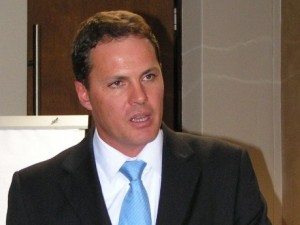
[miningmx.com] – DRDGOLD CEO Niel Pretorius has put his head on the block saying the gold retreatment firm will know this year if almost seven years of capital expenditure has been worthwhile.
“This model was intended to be resilient,’ he said of its investment in gold retreatment technology which totals nearly R600m over the last two years alone. “This gold price will show us if we’ve been successful or not.’
Under Pretorius’s watch, DRDGOLD has transformed from a wretched, highly marginal, often controversial gold miner of deep, watery, and usually unprofitable gold mines to something akin to a technology company.
The company’s primary activity is to re-mine the Witwatersrand’s gold dumps in a 62km long footprint extending from Johannesburg at the historic Crown mines through to all the region’s hotspots including Germiston, Boksburg and Brakpan where DRDGold’s Ergo plant.
For this, the company requires technical efficiency such that for every tonne of mine waste it re-mines, a princely 0.36 grammes of gold is squeezed out. Clearly, the game is one of volume: some 600,000 tonnes of mine waste is treated annually by DRDGold producing 4,400kg of gold.
DRDGold isn’t inured to the gold price as supported by the price performance – shares in DRDGold are down about 14% since January – while its cost base also stacks up pretty much like most gold companies. About 35% of total costs comprise labour and contractors, and another 30% consists of consumables.
Nonetheless, Pretorius has a better chance of achieving production consistency than his peers if the technology can be mastered.
At present, there’s some eight years of potential mine dumps to which DRDGold has access. Pretorius has no interest in extending the footprint, however. “The last thing we want to do is increase the size of our geographical footprint as this adds to more cost.
Rather, he’d prefer to develop new technology that can improve the yield; that is, less tonnes for more gold. “That does two things: it reduces our consumption of water and power, and it reduces the size of the tailings facility we need,’ said Pretorius.
DRDGold has committed itself to paying out 30% of its earnings in dividends. “The only story investors are buying is yield. If you don’t compete with industries that are paying a dividend, then you become irrelevant which is why the mining industry is struggling,’ says Pretorius.
The balance sheet will be tested on August 22. With most of the strategic capital investment out of the way, and with only a month required of working capital, DRDGold may yet pay a dividend as the rest of the gold industry slides beneath the waves.










